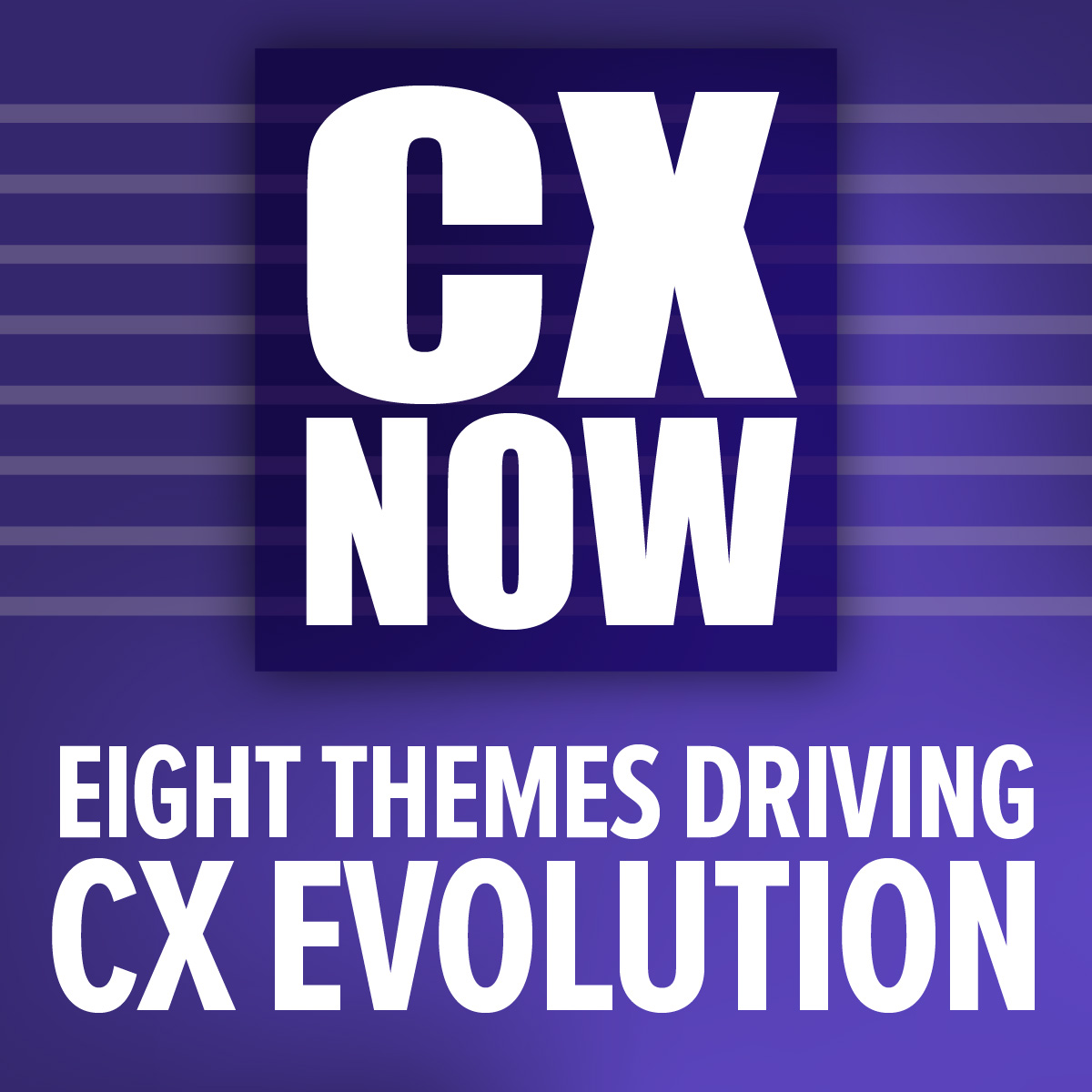

Nearly 70% of consumers say a website’s loading time affects their willingness to buy.
More than half of all customers will hire the first business to respond, even if they’re not the least expensive in a competitive scenario.
Speed was found to be an essential factor of CX in Walker’s 2013 report, Customers 2020 – and it’s only become more important since. The seven themes we’ve discussed in our CX Now series so far have all been building up to this critical aspect of customer experience.
What do we mean by speed?
When we talk about speed in the sense of customer experience, it’s about how a customer is expecting an experience to be delivered when it comes to the timeliness, the proactiveness, and the sheer speed of that delivery. And it’s how a company is delivering against those expectations.
Speed is measured on a continuum from reactive to proactive.
“We must be able to predict what the customer wants next. Today it is reactionary, after the fact.
In 2020, customers will expect firms to be ahead of them, knowing what they need before they themselves have shown the need.”
Customers 2020
What’s the value of speed?
Being speedy can help companies win business.
Making interactions seamless, plus using data, analytics, and technology, can make interactions more rapid. Pit stops during car races have changed from taking 67 seconds in 1950 to taking merely 3 seconds today. When each member of the team knows their role and place, and supporting technology is brought in, amazing advances happen. Fast pit stops are now table stakes, and the difference between winning and losing an F1 race can come down to an extra second or two in the pit lane.
One of the reasons Amazon became such a big retailer is because they disrupted how long customers thought they should have to wait between ordering an item and having it in their hand. Previously, online orders took about a week to get to consumers – which usually wasn’t fast enough to compete with going to a retail store to buy the item. Amazon’s two-day shipping was revolutionary – it was enough for consumers to decide they could wait for their purchase rather than making the trip to a store. And Amazon has only increased its delivery speed since.
From The CX Leader Podcast
In the eight episode of our CX Now series, Walker expert Sean Clayton discusses the importance of speed.
This “Amazon-ification” effect has changed the expectations across different industries and segments – consumer, B2B, patient experience, and more. And as the technology has evolved to support that faster infrastructure, expectations have adjusted along with it. Now, consumers are always on. They want instant gratification. This means that the speed of an experience has become table stakes.
Building blocks of speed
As mentioned in the intro, organizations that consistently meet or exceed customer expectations for speed need a proactive mindset, and that mindset requires prioritization and innovation. The company that is quickest to resolve product failures will always lose to the company that doesn’t have the failures. While we appreciate companies that have polite and competent customer service agents to fix our problems, we’d rather not have the problem in the first place.
If we think back to the remarkable decrease in pit stop times over the last 70 years, that decrease didn’t happen just by making the people or tools faster or better. There is limited improvement to how fast a human can move a tire. Racing teams are ruthlessly devoted to proactively addressing the needs of the car and driver. The approach that led to these improvements in pit stops is the same that we can use in our organizations:
- Map out all the things the car and driver would or could need during a pit stop – the jobs to be done,
- Align those jobs to the people, tools, and processes involved in each one,
- Prioritize the areas with high impact on speed and high feasibility that they can be improved,
- And then start innovating the selected processes and tools to get faster.
It doesn’t happen all at once. Priorities are set and advancements are made when and where they can be. This is a continual process – a discipline that organizations must remain dedicated to. The advantage of speed is often short-lived.
Just like racing teams, companies need to continually focus on innovative ways to add speed in the right parts of their business if they expect to remain competitive in today’s markets.
The right speed in the right places
Ultimately, speed needs to align with customer expectations and needs. Customers want certain things as fast as possible, but the companies that will succeed in the longer run are those who understand their customers. For speed to be effective in providing a competitive advantage, it must be aware of what customers need and want at every point of interaction with company products, services, and people. In the words of Jay Baer, companies need to understand what is the right “now.”
When eating at a fine dining establishment, you don’t want your food to appear immediately after you order it. The pacing of a meal should be unhurried so food and conversation can be enjoyed. Knowing what your customers expect is key to determining how fast the experience should be.
When we go to the doctor’s office, we don’t want to sit in the waiting room forever, but we also don’t want our doctor to rush through the visit. And sometimes the waiting is part of the experience – it enhances the exclusivity of the limited edition sneakers or the sought-after concert ticket.
The crucial role for CX leaders is to provide customer insights that identify the right areas of focus. Where is a faster experience going to have the biggest impact? What customer segments are asking for it? Without these insights, companies will have a much lower hit rate on successfully creating faster experiences that impact their customers and provide a competitive advantage.
How to get started making customer experiences faster
Just to be able to compete, you have to constantly rethink how you deliver the experience. Every industry is ripe for disruption because of technology, data, and analytics. You also need to consider how you can use technology to really improve and optimize the experiences you’re delivering today.
Customers want companies who can resolve their issues and anticipate future challenges – quickly. The other aspects of CX discussed in our CX Now series are necessary to optimize the time and effectiveness of experience delivery.
How can you measure whether you’re improving your speed if you don’t have a baseline? Start by gathering data.
- How quickly are we able to help customers do what they want to do?
- Are we clear with what they’re supposed to do?
- Do we have the right systems to support those elements?
- How do customers perceive the speed of our service – too fast, too slow, or just right?
- How do they feel about how long it took?
Speed is necessary throughout the customer journey – even when asking for feedback. Customers’ memories of their interactions fade with time. Asking for feedback as soon as possible – even during an interaction – is critical to gaining the clearest picture.
Understanding whether or not your customers are happy with how fast the speed of their experience is – and why – can help you personalize to their preferences and provide the right experience for each customer.
- In sales, this involves knowing which accounts value speed the most and need products NOW, as opposed to customers who want guidance in choosing which products and services fit their needs, even if that takes a little longer.
- In service, self-serve options can help customers who don’t want to wait.
Communication and setting expectations are always important, and customers can be very understanding when they know what’s going on. Fast is relative; customers usually know when a problem is complex and likely to take time and maybe a couple steps to fix.
Advanced digital capabilities are essential to enabling more rapid experiences. In many interactions, a digital experience will be faster and more effective than relying on a human. However, that assumes you are picking the right interactions with the right customers. The importance of understanding the right balance between digital and human services for different interactions and different customers can’t be understated. It’s also critical to ensure digital tools are designed correctly to meet your customers’ unique needs.
Technology is already available to help frontline employees deliver a better – and faster – experience:
- Improved routing: Getting the customer to the right person who can fix an issue improves efficiency by creating fewer transitions.
- Callback service: Calling customers back within a designated time frame keeps them from being frustrated by being on hold for long periods.
- Seamless transactions: Having customers’ personal information follow them through the website and to different agents saves time (and frustration!) by not making the customer repeatedly provide identifying information.
One major step is moving from being reactive to proactive.
- Proactive monitoring: Some products inform their manufacturer when they’re broken and call for service for themselves. In some cases, the company can push a patch digitally and resolve the issue before the customer knows anything was wrong.
- Issues analysis: One IT company has put effort into the types of cases that are typically problematic. They analyze when problems are likely to occur and push fixes out before something goes wrong. The best way to have great support is to never have a case!
Avoiding pitfalls
As mentioned earlier, speed has become table stakes for customer experience. But what if an agent gives you advice very quickly – but it’s bad advice? Or even though you receive a product overnight, what if it’s damaged? Or the wrong product?
Focusing on speed alone isn’t the way to go. Speed of experience comes from everything else working as it should. When service is seamless, personalized, and adapting to each customer’s needs and supported by integrated technology and enabled employees, attaining the right speed without sacrificing the quality of the experience becomes manageable.
Conclusion
The pace of business is accelerating rapidly. Time is of the essence. Customers can’t afford to wait around while their business issues are being considered.
They value companies that provide real-time response and proactively anticipate their future needs.
Companies need to anticipate needs and be proactive in delivering new solutions and solving problems before they ever really surface. To do this they need to leverage predictive analytics and implement decision support systems based on customer intelligence, analytics, and subject matter expertise.


